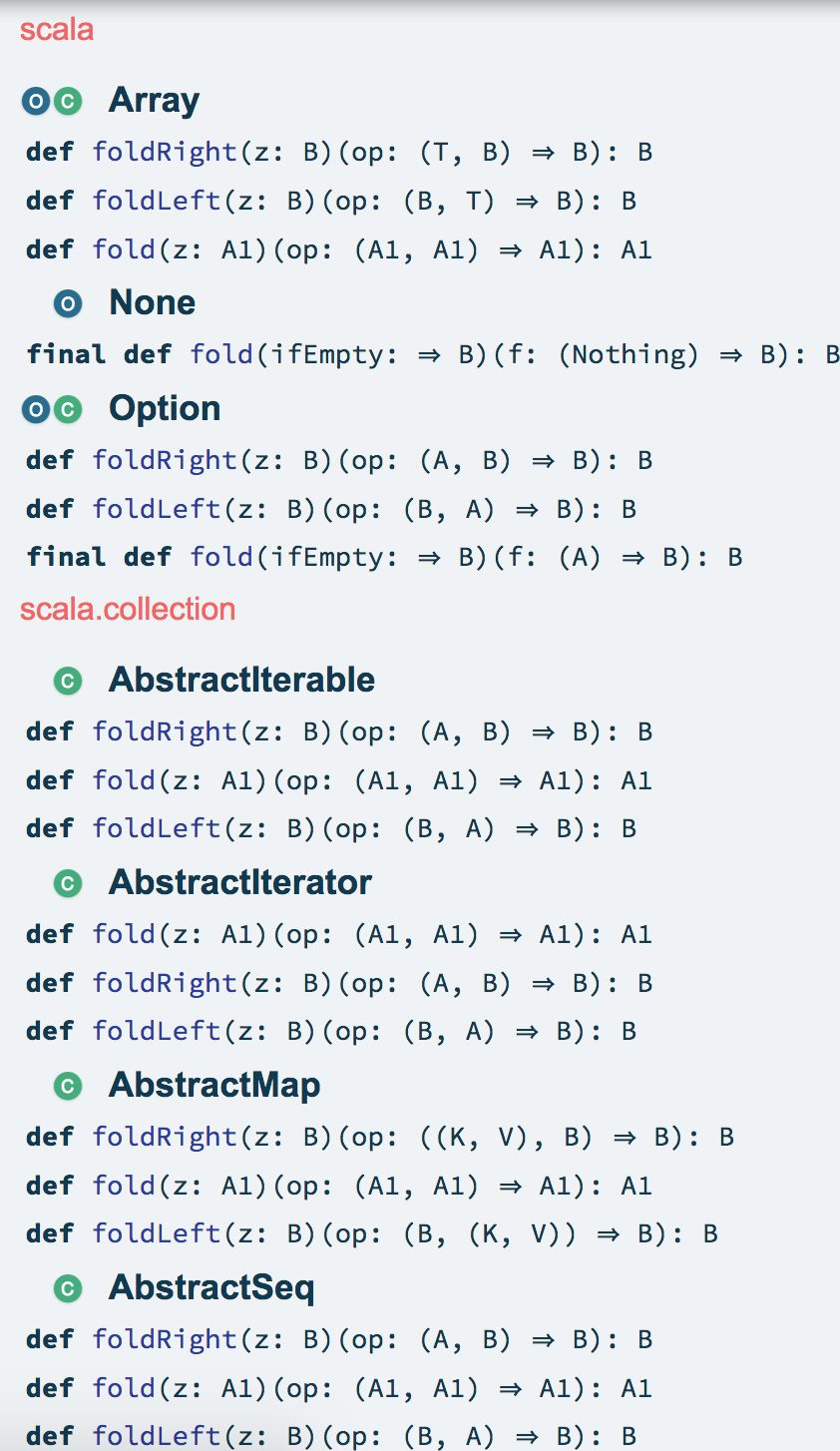Module 6: Sequencing computation
As we saw in module 4, generics is a very powerful tool, but can get tricky and it may seem to limit us, since we don’t have a concrete type, and types define the available operations. We might get the feeling we are loosing functionality or we have to introduce too much boilerplate code in order to make something useful. One way to take advantage of generics is sequencing computation. On this module we will review a couple of patterns for using generic data.
fold
In an academic definition, we can define the fold pattern as:
Given an
Adatatype, fold converts it to aBdatatype. Fold is a structural recursion with:
- one function parameter for each case in A.
- each function takes as parameters the fields for its associated class.
- if A is recursive, any function parameters that refer to a recursive field take a parameter of type B.
The right-hand side of pattern matching cases, or the polymorphic methods as appropriate, consists of calls to the appropriate function.
This means a fold will take you from type A to type B by means of a function.
Lets take advantage of the example in
Essential Scala to
go a bit further into `fold.
If we have created the type LinkedList[A]:
sealed trait LinkedList[A]
final case class Pair[A](head: A, tail: LinkedList[A]) extends LinkedList[A]
final case class End[A]() extends LinkedList[A]
We would define fold as:
sealed trait LinkedList[A] {
def fold[B](end: B, f: (A, B) => B): B =
this match {
case End() => end
case Pair(hd, tl) => f(hd, tl.fold(end, f))
}
}
final case class Pair[A](head: A, tail: LinkedList[A]) extends LinkedList[A]
final case class End[A]() extends LinkedList[A]
As we can see, fold is applied over a LinkedList[A] and returns a B, by means
of a function f:(A, B) => B. Fold will allow us to implement the following method
avoiding boiler plate.
def len(a: LinkedList[A]) = a.fold(0, (len, list) =>list + 1)
Some Scala classes have their own implementation of fold, we can see details in the
Scala official documentation.

One cool way of using fold is to work with Option.
For example, if we have:
val aux: Option[A] = ???
val value: A = aux.fold(default)(x => x)
map and flatMap
map and flatMap are in certain sense very similar to fold, but with a small twist.
Now we want to go from a F[A] type to a F[B] type by means of a function.
In the case of map, the function should be of type A => B. Following the example
we used to implement fold, we can implement map as follows:
sealed trait LinkedList[A] {
def map[B](f: A => B): LinkedList[B] =
this match {
case End() => End[B]()
case Pair(hd, tl) => Pair[B](f(hd), tl.map(f))
}
}
final case class Pair[A](head: A, tail: LinkedList[A]) extends LinkedList[A]
final case class End[A]() extends LinkedList[A]
As we can see we follow almost the same structure as in fold with the difference
that now we only apply the function to each individual element of the
LinkedList.
Now, flatMap has a slight difference with map. Again we want to go from
F[A] to F[B], but this time with an A => F[B] function. In order to implement
flatMap on LinkedList we would need to implement and append method, so lets
implement it on another type called Maybe, which will turn familiar to you.
sealed trait Maybe[A] {
def flatMap[B](f: A => Maybe[B]): Maybe[B] =
this match {
case Full(x) => f(x)
case Empty() => Empty[B]
}
}
final case class Full[A](value: A) extends Maybe[A]
final case class Empty[A]() extends Maybe[A]
Again as in fold, some classes have their own implementation, and can be found in the documentation.

Functional programming constructs in action
Now that we know how to use fold, map and flatMap we can work with them
on a very easy way by letting us be guided by types. For example, lets suppose
we have the following:
sealed trait MyOwnType[A] {
def fold[B](param: B)(f: (A,B) => B): B = ???
def map[B](f: A => B): MyOwnType[B] = ???
def flatMap[B](f: A => MyOwnType[B]): MyOwnType[B] = ???
}
How would we go to:
val value1: MyOwnType[Double] = ???
val value2: String = ???
val value3: MyOwnType[Int] = ???
By using:
def funct1[A](arg: A): MyOwnType[A] = ???
def funct2[A](arg1: A, arg2: String): String = ???
def funct3[A](arg: A): Double = ???
The solution is:
val subject: MyOwnType = MyOwnType("This is a String")
val value1: MyOwnType[Double] = subject.map(funct3[String](???))
val value2: String = subject.fold("Hi")(funct2[String](???, ???))
val value3: MyOwnType[Int] = subject.flatMap(funct1[Int](???))